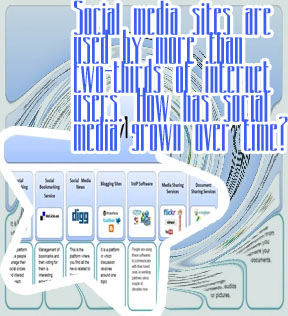
Information shared on social media
Three tips for increasing social shares
The research team from the USC Marshall School of Business and the USC Dornsife College of Letters, Arts and Sciences wondered: What motivates these users? As it turns out, much like any video game, social media has a rewards system that encourages users to stay on their accounts and keep posting and sharing. Users who post and share frequently, especially sensational, eye-catching information, are likely to attract attention. Social media and sharing information So, how is social media different from traditional approaches to marketing and communications? It's all about engagement. Instead of broadcasting information to an audience, social media enables us to connect and converse. This is a medium in which traditional approaches to "telling" people won't work or be accepted. Certainly, we can inform people about events, programs and news, but that is just part of how these tools are used. The rest is about having a conversation. That's the "social" in social media. However, social media cannot stand apart from your marketing and communications strategies, but should be incorporated as part of a holistic communications approach.
Information sharing on social media sites
This might sound a bit sterile. But there could be an upside. It might make the internet a fun place to be. Much like the culture of forums that defined the early years of mass internet access, the separation of online identities – some anonymous or pseudonymous – may facilitate a situation where users can set their own boundaries and parameters and curate their own identities, all while feeling more protected and free to express themselves. Of course, this will come with its own problems, but it may just facilitate an internet culture in which users will actually have to engage with each other again, rather than the amalgamations of data and networks that social media platforms have placed them in – and defined them by. Contact Us Over the past ten years, social media has grown astronomically. There was minimal participation in the industry in 2005. At the time, most of them were unaware, and among those who knew, having the opportunity to establish a MySpace page typically meant elaborate backgrounds and unique playlists rather than a direct connection. If people were to spring back a little bit, the real taste of social media emerged from blogging, where accounts were created sometime in the 1980s. After that, the evolution of free platforms and chat rooms created newer social opportunities. Later Facebook, Twitter, and others revolutionized it.
3. For an Incentive
Chaffey, D. (2016). Global Social Media Research Summary 2016. Smart Insights. Social Media Marketing. Available at: http://www.smartinsights.com/social-media-marketing/social-mediastrategy/new-global-social-media-research/ (accessed Oct 3, 2016). Spoiler Alert: It’s All About Relationships TikTok allows users to create and share videos between 15 and 60 seconds long, and the app has a vast catalog of sound effects, music snippets, and filters to enhance the videos and make them more appealing. You can find videos relating to almost all interests, ranging from lip-syncs, dancing, and challenges to DIY tricks and make-up tutorials. About 47.4% of TikTok users in the U.S. are aged 10-29. So if your target demographic is young, then TikTok is a great platform for your business to be on.

Recent Comments